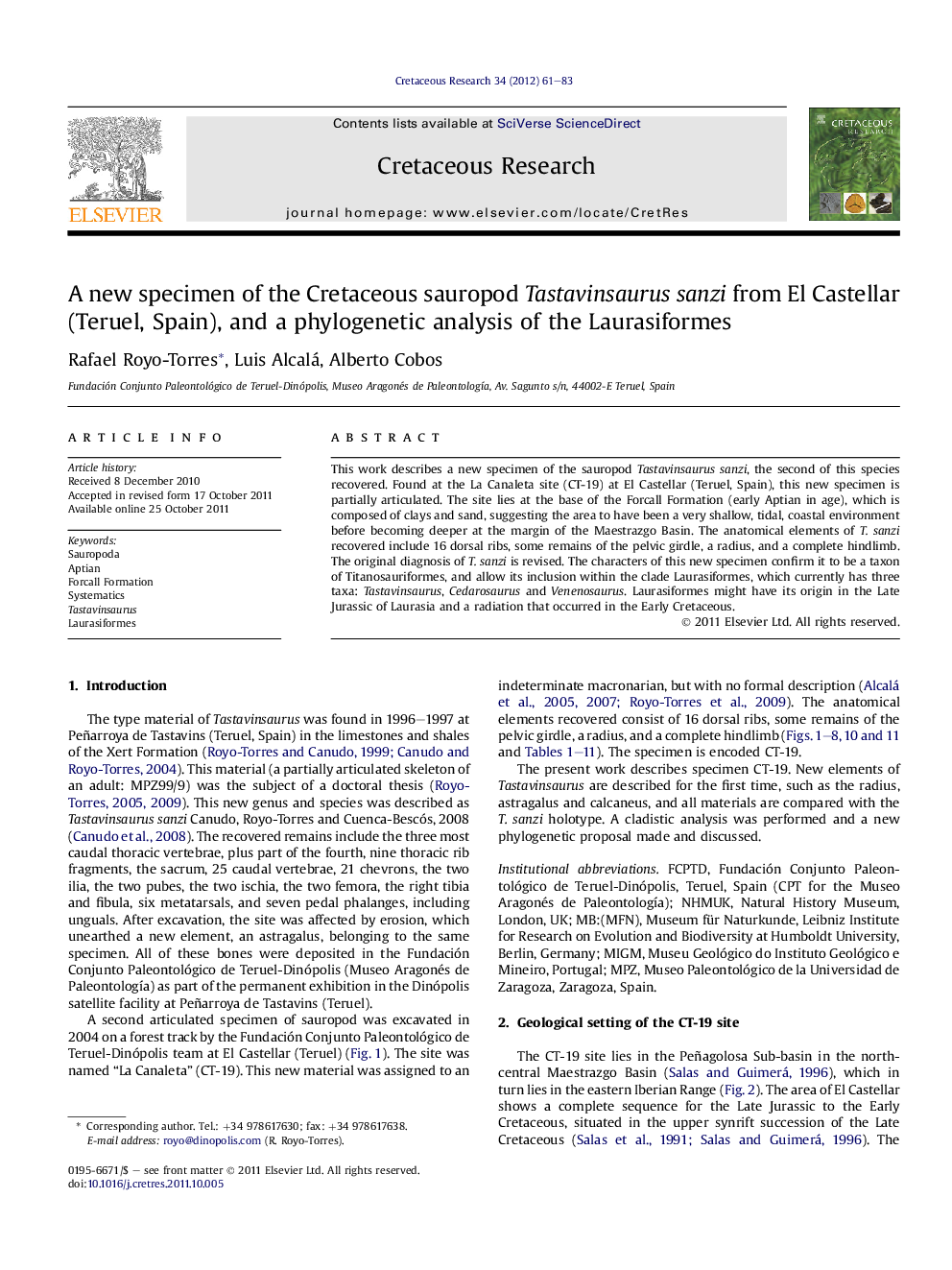| Article ID | Journal | Published Year | Pages | File Type |
|---|---|---|---|---|
| 4747364 | Cretaceous Research | 2012 | 23 Pages |
This work describes a new specimen of the sauropod Tastavinsaurus sanzi, the second of this species recovered. Found at the La Canaleta site (CT-19) at El Castellar (Teruel, Spain), this new specimen is partially articulated. The site lies at the base of the Forcall Formation (early Aptian in age), which is composed of clays and sand, suggesting the area to have been a very shallow, tidal, coastal environment before becoming deeper at the margin of the Maestrazgo Basin. The anatomical elements of T. sanzi recovered include 16 dorsal ribs, some remains of the pelvic girdle, a radius, and a complete hindlimb. The original diagnosis of T. sanzi is revised. The characters of this new specimen confirm it to be a taxon of Titanosauriformes, and allow its inclusion within the clade Laurasiformes, which currently has three taxa: Tastavinsaurus, Cedarosaurus and Venenosaurus. Laurasiformes might have its origin in the Late Jurassic of Laurasia and a radiation that occurred in the Early Cretaceous.
► Description of a new specimen of the sauropod Tastavinsaurus sanzi. ► The newly elements confirm the inclusion of this taxon in the clade Titanosauriformes. ► Laurasiformes is a clade inside of Titanosauriformes which containing Tastavinsaurus, Cedarosaurus and Venenosaurus.
